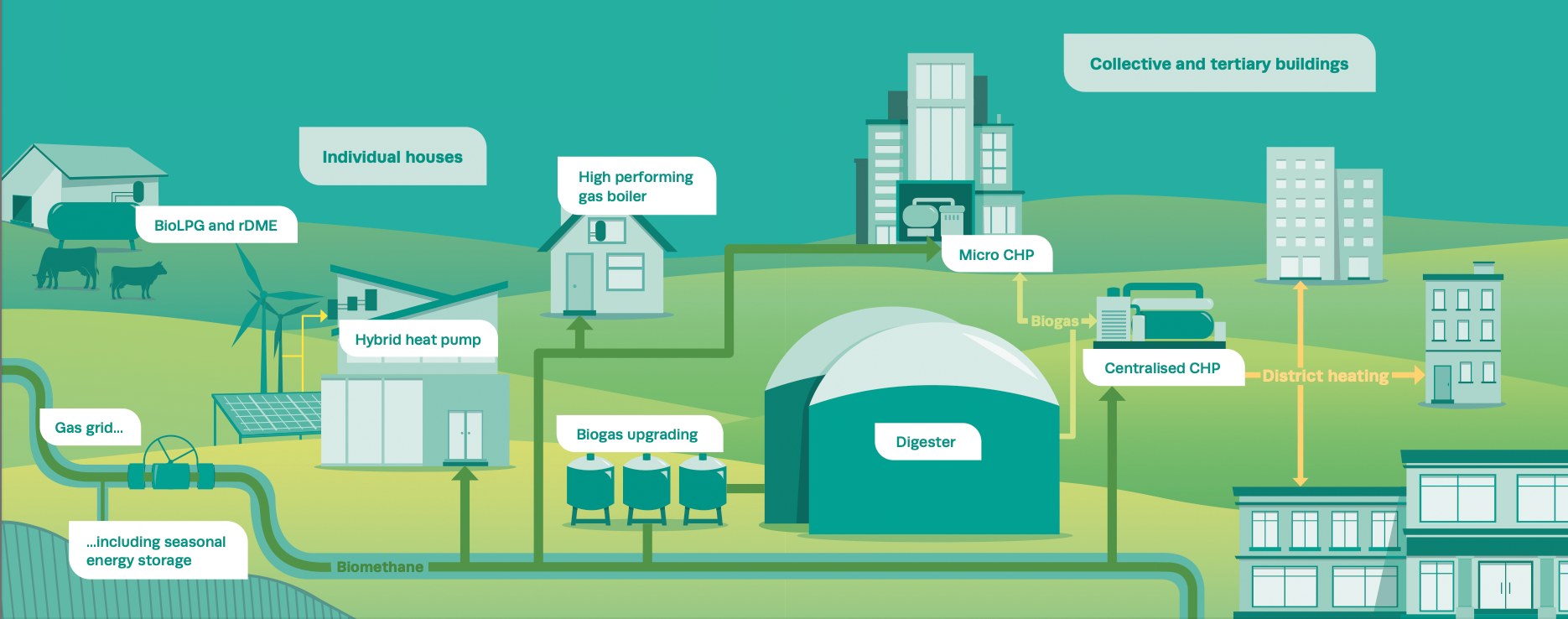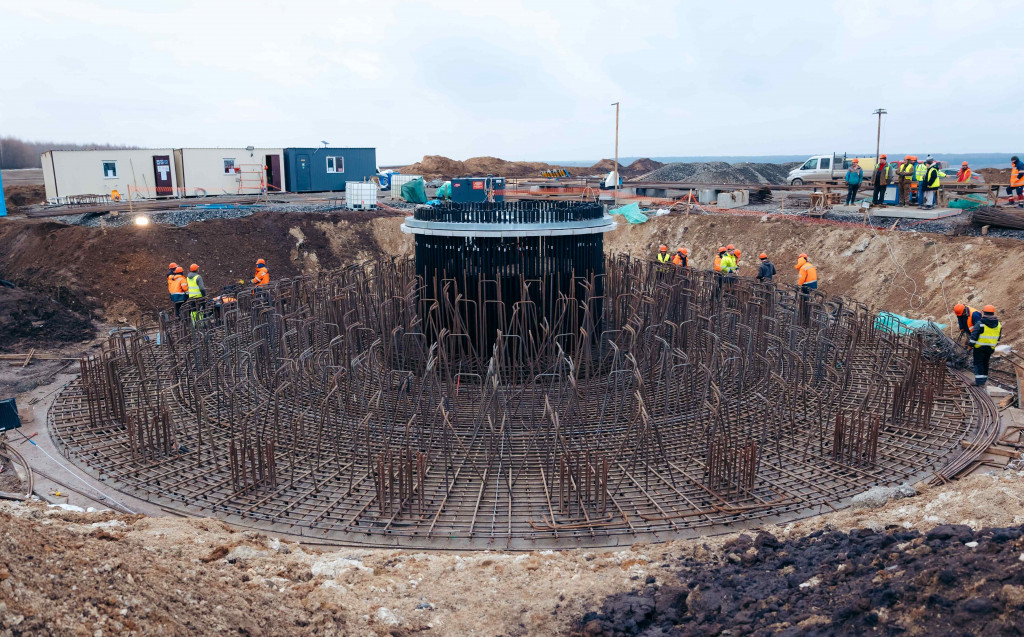
How can biogas and biomethane help to decarbonise the heating sector?
22.09.2023The document explores the features and ways of using biogas and biomethane for heat supply.
WHY IS IT IMPORTANT?
‼️ Buildings are the largest energy consumers in the EU, accounting for 42% of total consumption and 36% of CO2 emissions.
♻️ Only 23% of primary energy comes from renewable sources.
In the context of the transition to a climate-neutral building sector, biogas and biomethane are an easy-to-implement and cost-effective solution.
?️ The heat generated from the combustion of these gases can be used to heat residential and non-residential infrastructure. Boiler houses can be located either directly on site or connected to buildings through a district heating network.
⚙️ For local heat production, the following energy equipment can be used: cogeneration mini-systems, fuel cell systems or integrated systems such as a biomethane boiler with an electric heat pump.
? Biogas and biomethane are competitive renewable heat sources that can be used for heating purposes in the following ways:
- Supply of biomethane (biogas enriched to the level of natural gas) to the gas distribution system and its use as a fuel for high-efficiency gas boilers and hybrid heat pumps in private and multi-apartment buildings.
- Supplying heat to the central heating network from biomethane-fuelled cogeneration units.
In rural areas where there is no access to gas transmission systems, biogas can be burned directly, without conversion to biomethane, and the resulting heat can be supplied to the local heating network. - The use of liquefied biomethane and dimethyl ether produced from renewable sources by residents of private houses that are not connected to the gas distribution system (replacement of fuel oil or LPG).

Become a member of 100 RE UA
Switching to 100% renewable energy in Ukraine is possible!




